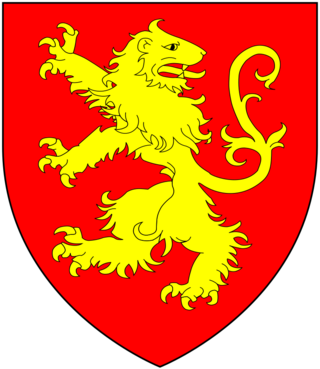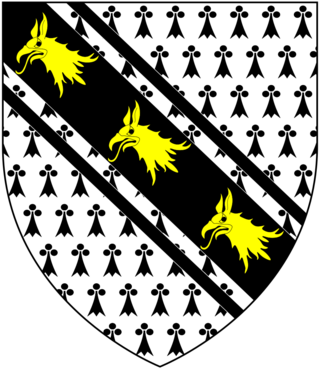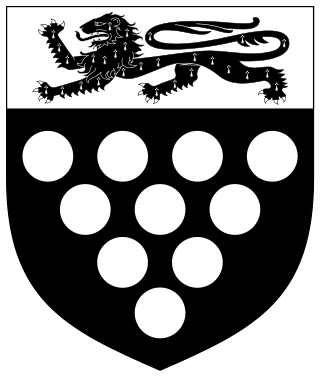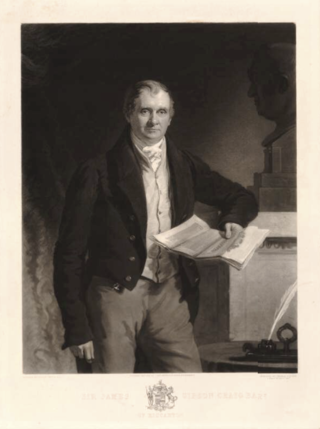
The Inglis Baronetcy, of Milton Bryan, Bedfordshire, was created in the Baronetage of the United Kingdom on 6 June 1801 for Hugh Inglis. [1]

The Inglis Baronetcy, of Milton Bryan, Bedfordshire, was created in the Baronetage of the United Kingdom on 6 June 1801 for Hugh Inglis. [1]

Sir John William Lubbock, 2nd Baronet FRS was an English banker.

The Ashurst Baronetcy, of Waterstock in the County of Oxford, was a title in the Baronetage of England. It was created on 21 July 1688 for Henry Ashurst, Member of Parliament for Truro and Wilton. The second Baronet represented Windsor in Parliament. The title became extinct on his death in 1732.

Algernon Percy, 1st Earl of Beverley FSA, styled Lord Algernon Percy between 1766 and 1786 and known as the Lord Lovaine between 1786 and 1790, was a British politician who sat in the House of Commons from 1774 to 1786 when he succeeded to the Peerage.

The Morice Baronetcy, of Werrington in the County of Devon, was a title in the Baronetage of England.

The Yonge Baronetcy, of Culliton in the County of Devon, was a title in the Baronetage of England. It was created on 26 September 1661 for the merchant and Member of Parliament, John Yonge. He was succeeded by his son Walter, the second Baronet. He was also a Member of Parliament. His son, the third Baronet, sat in the House of Commons for more than a quarter of a century. On his death the title passed to his son, the fourth Baronet. He was also a politician and served as Secretary at War. He is also remembered for his diaries. He was succeeded by his son, the fifth Baronet. Like his father he served as Secretary at War and was also Governor of the Cape Colony. The baronetcy became extinct on his death in 1812.

The Hildyard Baronetcy, of Patrington in the County of York, was a title in the Baronetage of England. It was created on 25 June 1660 for Robert Hilyard, of Patrington and Winestead. The ancient Hildyard family is thought to have been of Saxon origin. Robert Hildyard served as Gentleman of the Bedchamber to King Charles I of England and was a major-general in the King's army during the English Civil War. He took part in the Battle of Marston Moor. He was raised to a baronetcy by Charles II following the Restoration of the Monarchy. He was succeeded by his grandson Sir Robert Hildyard, 2nd Baronet, a Member of Parliament for Hedon. He was succeeded by his nephew, the third Baronet, who was Member of Parliament for Great Bedwyn. The latter's son, the fourth Baronet, was High Sheriff of Yorkshire in 1783. On his death in 1814 the baronetcy became extinct.

Sir Hugh Inglis, 1st Baronet was an East Indies merchant and politician.

The Hannay Baronetcy, of Mochrum in the Stewardry of Kirkcudbright, was a title in the Baronetage of Nova Scotia. It was created on 31 March 1630 for Robert Hannay. The title became dormant on the death of the second Baronet in 1689. The title was claimed in 1783 by Samuel Hannay, the third Baronet. He sat as Member of Parliament for Camelford. His son, the fourth Baronet, was in the service of the Emperor of Austria. He was unmarried and the baronetcy again became dormant on his death in 1842.

The Keate Baronetcy, of The Hoo in the County of Hertford, was a title in the Baronetage of England. It was created on 12 June 1660 for Jonathan Keate, subsequently Member of Parliament for Hertfordshire. The title became extinct on the death of the fourth Baronet in 1757.
Samuel Crawley was an English Whig politician who sat in the House of Commons variously between 1818 and 1841.

Sir Thomas Aston Clifford-Constable, 2nd Baronet was a British landowner and Member of Parliament.

Sir Godfrey Webster, 4th Baronet was an English politician. He used the additional surname Vassall in the period 1795 to 1797.
Sir Horace David Cholwell St Paul, 1st Baronet was an English soldier and Member of Parliament.
Sir David Wedderburn, 1st Baronet was a Scottish businessman and Tory politician. He was Postmaster General for Scotland 1823-31 and a member of two London militias before that.

The Bridgeman baronetcy, of Ridley in the County of Chester, was created on 12 November 1673 for Orlando Bridgeman, Member of Parliament for Horsham and younger son of the 1st Baronet, of the Great Lever creation. He was succeeded by his son, the 2nd Baronet. The latter was Member of Parliament for Calne, Lostwithiel, Blechingley and Dunwich.

The Stapylton baronetcy, or Stapleton, of Myton in Yorkshire, was created in the Baronetage of England on 22 June 1660 for Henry Stapylton.

The Bowyer baronetcy, of Knipersley in the County of Stafford, was created in the Baronetage of England in 1660 for John Bowyer. He sat as Member of Parliament for Staffordshire and Newcastle-under-Lyme. His elder son, the second Baronet, represented Warwick and Staffordshire in the House of Commons. His son, the third Baronet, died childless and was succeeded by his uncle, the fourth Baronet. On the latter's death in 1701 without surviving male issue the title became extinct.
Sir John Lowther Johnstone, 6th Baronet (1783–1811) was a British Army officer and politician.
Sir Samuel Vanacker Sambrooke, 3rd Baronet of Bush Hill, Enfield, Middlesex, was a British landowner and politician who sat in the House of Commons as MP for Bramber and Great Bedwyn.

Sir James Gibson-Craig, 1st Baronet (1765–1850) was a Scottish lawyer and government official. In politics he was a Foxite Whig. In early life he was known as James Gibson of Ingleston. He was created a baronet in the Baronetage of the United Kingdom in 1831.